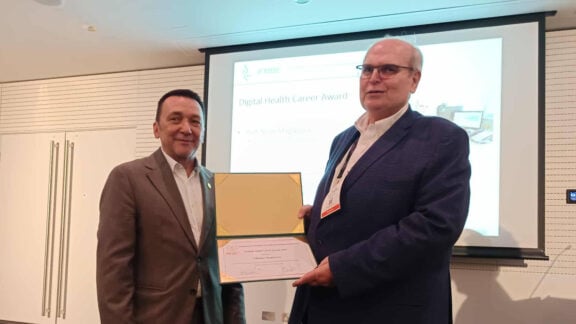Historical use: Methamphetamine (also referred to as, METH, ice, crystal, speed, Tina, chalk, glass) was first synthesized from ephedrine by Dr Nagayoshi Nagiai of Tokyo Imperial University in 1888 of which its psychoactive properties were noted much later. METH is a key member of a broader group of substances known as Amphetamine Type Stimulants, which have been used in the USA since 1960. During WWII German army personnel and pilots were issued METH, under the brand name of Pervitin, in order to stay awake, be active for prolonged hours, reduce fatigue, and suppress appetite. Thereafter, METH was commonly prescribed in the 1950s and 1960s for the treatment of ADHD, depression, narcolepsy, and obesity, under the brand names of Methedrine and, Desoxyn. In the mid-1980s METH entered the Australian community especially in the younger generation which significantly rose in the 1990s due to more potent METH (crystal-METH or ice; 80% pure) becoming available, leading to the ‘ice’ epidemic. Previously to this, the locally manufactured METH was the base powdered form with a purity of only 20% posing high health and safety hazards. The base form is less potent than crystal METH with a corresponding association with health and social outcomes. In Australia, METH use, surpassed alcohol use, with 39.8% of Australians identifying METH as the greatest issue, followed by alcohol (28.4%), tobacco 9.4%, heroin 7.5%, and cocaine 3.6%. Collectively, tobacco smoking, alcohol and METH kill around 12 million people each year, more than all cancers combined.
Effects of METH on the body: There is a vast range of issues associated with METH use, including physical violence, aggression, socioeconomic impacts, decreased occupational and social functioning, and significant health deterioration. Psychological distress is common among regular METH users. Approximately 40% of users experience psychological symptoms including anxiety, irritability, mood disturbances, psychosis, and hallucinations. In addition, METH is linked to cognitive decline, depression, are at increased of developing dementia especially Parkinson’s disease, are highly prevalent to heart attacks and strokes, are suicidal and high levels of deaths. In 2020 METH related deaths were four times higher compared to the number of deaths in 2000: with the number of deaths doubling in the last five years. Even following a brief spout of METH exposure, serious behavioural, cognitive, and psychological effects result, and it takes several years to regain normal functioning.
METH pandemic in Australia: METH can be taken via several modes, most commonly used through smoking, snorting, ingestion, or injection. The Australian Crime Commission reported that 60% of the highest-level criminal entities in the country are heavily engaged in the manufacturing and/or supply of METH or related drugs. In 2010-2015, METH addiction reached a health crisis point, prompting significant action from health and government authorities. In 2019, 1.2 million Australians aged over 14 years had used METH in their lifetime and the rate of addiction in Australia was reported to be the highest in the world. With the global population of 5.5% having used METH and other illicit drugs in the past one year. The number of METH related hospital separations significantly increased linearly from 1,741 in 2012/2013 to 8,652 in 2016/17. The cost of METH use to the government, in regard to loss work productivity, increased healthcare costs and, drug related crimes amount to more than $740 billion per year in the US alone and this cost is steadily increasing; the cost to the Australian government is not far behind.
The number of clandestine laboratories have increased dramatically: The number of clandestine laboratories that manufacture METH in Australia increased dramatically by over 200% between 2007-2017 but has been declining in recent years (albeit still high; with 1 in 7 rental properties being used to manufacture METH) due to the actions taken by the Australian government to stop METH addiction and associated harms. Despite these measures, METH still remains a significant public health concern, and overcoming METH abuse is a global challenge. Prevention, education, and evidence-based treatments are crucial to address the impact of METH on individuals and to society.
Treatments to overcome addiction: Treatments to overcome METH addiction is very challenging and requires dedication and support. It is advisable that individuals seeking treatment for METH addiction should reach out for professional guidance from, healthcare professionals, METH addiction specialists, or METH addiction rehabilitation centres to discuss the best options for their specific needs.
In addition, a combination of therapies are recommended, and, include:
a. Detoxification therapy which requires medical and psychological support, gradual tapering and monitoring support
b. Behavioural therapies, to include coping strategies, understanding of the addiction, positive change behaviours and cognitive behavioural therapy
c. Individual counselling, or support group therapy which provide emotional support and education
d. Motivational interviewing, an approach used to aid the person with the addiction to find their own way of change
e. Involvement of family support can be beneficial
f. Residential treatment (rehab facilities) can be very useful especially In severe cases of METH addiction, as this involves 24/7 monitoring.
g. Outpatient treatment, whereby the individual attends programs to overcome addiction but still living at home
h. Relapse prevention programs are useful to help the individual to identify triggers of relapse and ways to over these triggers
i. Alternative therapies are also useful which include meditation, yoga, mindfulness, and physical activity.
j. Even though there are no approved medications to overcome METH addiction, some medications such as bupropion, modafinil, and N-acetylcysteine, can reduce cravings.
k. Prevention: New potential methodologies to treat/prevent relapse of METH is to develop a METH blocker, or vaccine. As such, we have developed 5 METH vaccine formulations which stimulate anti-METH antibody responses. Human clinical trials are warranted.
For further reading on METH addiction, illicit drug use addiction, and new vaccine developments against METH addiction refer to the following research publications.
– www.mdpi.com/2076-393X/11/2/340
– www.mdpi.com/1422-0067/23/19/11224
– www.mdpi.com/2076-393X/10/11/1778
– www.mdpi.com/1422-0067/24/3/2737
– www.tandfonline.com/doi/abs/
– www.tandfonline.com/doi/abs/10
– www.sciencedirect.com/science/article/pii/








